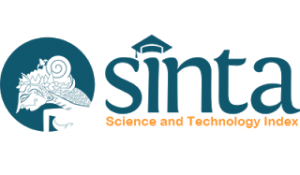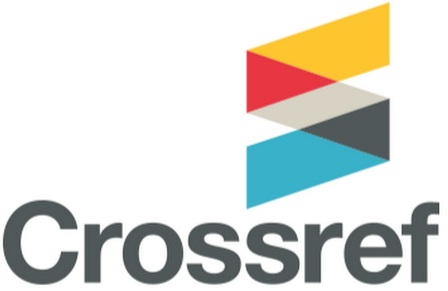Generative AI adoption among tech-savvy: examining moderated mediated model of knowledge sharing
(1) Islamic University of Kalimantan, Banjarmasin, Indonesia
(2) Islamic University of Kalimantan, Banjarmasin
(3) Islamic University of Kalimantan, Banjarmasin
(4) Postgraduate Program, Islamic University of Kalimantan, Banjarmasin, Indonesia
(5) Postgraduate Program, Islamic University of Kalimantan, Banjarmasin, Indonesia
(*) Corresponding Author
Abstract
This study investigates factors influencing AI adoption in education, focusing on the roles of Digital Touchpoints, Tech Savvy, and knowledge-sharing practices among students and instructors. Using an explanatory quantitative design, data were collected from 213 business students through a digital survey. The model measures Digital Touchpoints, Tech Savvy, Gen. AI Adoption, Instructor KS, and Student KS, with a 7-point Likert scale used for responses. Data analysis involved descriptive statistics and PLS-SEM for model evaluation and hypothesis testing. The results show that Digital Touchpoints positively impact both Gen. AI Adoption and Tech Savvy, with Tech Savvy further enhancing AI adoption. Student KS significantly moderates the Digital Touchpoints-Tech Savvy relationship, whereas Instructor KS does not. Mediation analysis reveals that Tech Savvy mediates the effect of Digital Touchpoints on Gen. AI Adoption, though mediated moderation effects are not significant. These findings underscore the importance of digital engagement and peer interactions in promoting tech skills and AI adoption in educational settings.
Keywords
Full Text:
PDFReferences
Almaiah, M. A., Alfaisal, R., Salloum, S. A., Al-Otaibi, S., Al Sawafi, O. S., Al-Maroof, R. S., Lutfi, A., Alrawad, M., Mulhem, A. Al, & Awad, A. B. (2022). Determinants Influencing the Continuous Intention to Use Digital Technologies in Higher Education. Electronics (Switzerland), 11(18), 2827. https://doi.org/10.3390/electronics11182827
Ben Youssef, A., Dahmani, M., & Omrani, N. (2015). Information technologies, students’ e-skills and diversity of learning process. Education and Information Technologies, 20(1), 141–159. https://doi.org/10.1007/s10639-013-9272-x
Bengio, Y., Hinton, G., Yao, A., Song, D., Abbeel, P., Darrell, T., Harari, Y. N., Zhang, Y. Q., Xue, L., Shalev-Shwartz, S., Hadfield, G., Clune, J., Maharaj, T., Hutter, F., Baydin, A. G., McIlraith, S., Gao, Q., Acharya, A., Krueger, D., … Mindermann, S. (2024). Managing extreme AI risks amid rapid progress: Preparation requires technical research and development, as well as adaptive, proactive governance. Science, 384(6698), 842–845. https://doi.org/10.1126/science.adn0117
Chen, L., Chen, P., & Lin, Z. (2020). Artificial Intelligence in Education: A Review. In IEEE Access (Vol. 8). https://doi.org/10.1109/ACCESS.2020.2988510
Coffin Murray, M., Pérez, J., & Fluker, J. (2022). Digital Literacy in the Core: The Emerging Higher Education Landscape. Issues in Informing Science and Information Technology, 19, 001–013. https://doi.org/10.28945/4957
Combes, B. (2021). The Net Generation: Tech-savvy or lost in virtual space? IASL Annual Conference Proceedings. https://doi.org/10.29173/iasl7966
Delgado, A., & McGill, C. M. (2023). Graduate Students’ Perceptions of Instructor Power in the U.S. Higher Education Classroom. New Horizons in Adult Education and Human Resource Development, 35(4), 186–198. https://doi.org/10.1177/19394225231189937
Demssie, Y. N., Biemans, H. J. A., Wesselink, R., & Mulder, M. (2023). Fostering students’ systems thinking competence for sustainability by using multiple real-world learning approaches. Environmental Education Research, 29(2), 261–286. https://doi.org/10.1080/13504622.2022.2141692
Dolmark, T., Sohaib, O., Beydoun, G., Wu, K., & Taghikhah, F. (2022). The Effect of Technology Readiness on Individual Absorptive Capacity Toward Learning Behavior in Australian Universities. Journal of Global Information Management, 30(1), 1–21. https://doi.org/10.4018/JGIM.306245
Hair, J. F., Sarstedt, M., Hopkins, L., & Kuppelwieser, V. G. (2014). Partial least squares structural equation modeling (PLS-SEM): An emerging tool in business research. European Business Review, 26(2), 106–121. https://doi.org/10.1108/EBR-10-2013-0128
Heidari, E., Mehrvarz, M., Marzooghi, R., & Stoyanov, S. (2021). The role of digital informal learning in the relationship between students’ digital competence and academic engagement during the COVID-19 pandemic. Journal of Computer Assisted Learning, 37(4), 1154–1166. https://doi.org/10.1111/jcal.12553
Horowitz, M. C., Kahn, L., Macdonald, J., & Schneider, J. (2024). Adopting AI: how familiarity breeds both trust and contempt. In AI and Society (Vol. 39, Issue 4). https://doi.org/10.1007/s00146-023-01666-5
Indrawati, C. D. S., Subarno, A., Winarno, W., Permansah, S., Wirawan, A. W., & Rusmana, D. (2023). Influence of Work Motivation, Interpersonal Skills, and Knowledge Construction on the Work Readiness of Vocational Students. Education Research International, 2023(undefined LB-cicilia_dyah_sulistyaningrum_indrawati_dc858593), 1–10. https://doi.org/10.1155/2023/4956337
Kesici, S., Bayrakci, Z., Birbilen, A. Z., Hanalioglu, D., Öztürk, Z., Teksam, Ö., Hüyüklü, İ., Durgu, E., & Bayrakci, B. (2021). Peer Education Model for Basic Life Support Training among High School Children: A Randomized Trial. Prehospital and Disaster Medicine, 36(5), 553–560. https://doi.org/10.1017/S1049023X21000674
Kharrufa, A., & Johnson, I. (2024). The Potential and Implications of Generative AI on HCI Education. In ACM International Conference Proceeding Series. https://doi.org/10.1145/3658619.3658627
Kim, J. W., & Ritter, F. E. (2015). Learning, forgetting, and relearning for keystroke- and mouse-driven tasks: Relearning is important. Human-Computer Interaction, 30(1), 1–33. https://doi.org/10.1080/07370024.2013.828564
Kizilcec, R. F. (2024). To Advance AI Use in Education, Focus on Understanding Educators. In International Journal of Artificial Intelligence in Education (Vol. 34, Issue 1). https://doi.org/10.1007/s40593-023-00351-4
Liang, J., Wang, L., Luo, J., Yan, Y., & Fan, C. (2023). The relationship between student interaction with generative artificial intelligence and learning achievement: serial mediating roles of self-efficacy and cognitive engagement. Frontiers in Psychology, 14. https://doi.org/10.3389/fpsyg.2023.1285392
Lynch, M., Sage, T., Hitchcock, L. I., & Sage, M. (2021). A heutagogical approach for the assessment of Internet Communication Technology (ICT) assignments in higher education. In International Journal of Educational Technology in Higher Education (Vol. 18, Issue 1). https://doi.org/10.1186/s41239-021-00290-x
McElheran, K. S., Li, J. F., Brynjolfsson, E., Kroff, Z., Dinlersoz, E., Foster, L., & Zolas, N. J. (2023). AI Adoption in America: Who, What, and Where. SSRN Electronic Journal. https://doi.org/10.2139/ssrn.4609858
Michaeli, T., Romeike, R., & Seegerer, S. (2023). What Students Can Learn About Artificial Intelligence – Recommendations for K-12 Computing Education (pp. 196–208). https://doi.org/10.1007/978-3-031-43393-1_19
Michel-Villarreal, R., Vilalta-Perdomo, E., Salinas-Navarro, D. E., Thierry-Aguilera, R., & Gerardou, F. S. (2023). Challenges and Opportunities of Generative AI for Higher Education as Explained by ChatGPT. Education Sciences, 13(9), 856. https://doi.org/10.3390/educsci13090856
Mitchell, T., Cohen, W., Hruschka, E., Talukdar, P., Yang, B., Betteridge, J., Carlson, A., Dalvi, B., Gardner, M., Kisiel, B., Krishnamurthy, J., Lao, N., Mazaitis, K., Mohamed, T., Nakashole, N., Platanios, E., Ritter, A., Samadi, M., Settles, B., … Welling, J. (2018). Never-ending learning. Communications of the ACM, 61(5), 103–115. https://doi.org/10.1145/3191513
Mustroph, C., & Steinbock, J. (2024). ChatGPT in foreign language education - friend or foe? A quantitative study on pre-service teachers’ beliefs. Technology in Language Teaching & Learning, 6(1), 1133. https://doi.org/10.29140/tltl.v6n1.1133
Ng, D. T. K., Leung, J. K. L., Su, J., Ng, R. C. W., & Chu, S. K. W. (2023). Teachers’ AI digital competencies and twenty-first century skills in the post-pandemic world. Educational Technology Research and Development, 71(1), 137–161. https://doi.org/10.1007/s11423-023-10203-6
Ogunleye, B., Zakariyyah, K. I., Ajao, O., Olayinka, O., & Sharma, H. (2024). A Systematic Review of Generative AI for Teaching and Learning Practice. In Education Sciences (Vol. 14, Issue 6). https://doi.org/10.3390/educsci14060636
Pedersen, C., Aagaard, T., Daus, S., Nagel, I., Amdam, S. H., Vika, K. S., Røkenes, F. M., & Andreasen, J. K. (2024). Profiling teacher educators’ strategies for professional digital competence development. Teachers and Teaching: Theory and Practice, 30(4 LB-cathrine_pedersen_e9f8648f), 417–436. https://doi.org/10.1080/13540602.2024.2336612
Qureshi, M. A., Khaskheli, A., Qureshi, J. A., Raza, S. A., & Yousufi, S. Q. (2023). Factors affecting students’ learning performance through collaborative learning and engagement. Interactive Learning Environments, 31(4), 2371–2391. https://doi.org/10.1080/10494820.2021.1884886
Ruediger, D., Blankstein, M., & Love, S. (2024). Generative AI and Postsecondary Instructional Practices: Findings from a National Survey of Instructors. In Ithaka S+R. https://doi.org/10.18665/sr.320892
Saidakhror, G. (2024). The Impact of Artificial Intelligence on Higher Education and the Economics of Information Technology. International Journal of Law and Policy, 2(3), 1–6. https://doi.org/10.59022/ijlp.125
Sáiz-Manzanares, M. C., Marticorena-Sánchez, R., Martín-Antón, L. J., González Díez, I., & Almeida, L. (2023). Perceived satisfaction of university students with the use of chatbots as a tool for self-regulated learning. Heliyon, 9(1), e12843. https://doi.org/10.1016/j.heliyon.2023.e12843
Schindler, L. A., Burkholder, G. J., Morad, O. A., & Marsh, C. (2017). Computer-based technology and student engagement: a critical review of the literature. In International Journal of Educational Technology in Higher Education (Vol. 14, Issue 1). https://doi.org/10.1186/s41239-017-0063-0
Sergeyuk, A., Koshchenko, E., Zakharov, I., Bryksin, T., & Izadi, M. (2024). The Design Space of in-IDE Human-AI Experience. In ICSE SEIP 2025. https://doi.org/doi.org/10.48550/arXiv.2410.08676
Sullivan, M., Kelly, A., & McLaughlan, P. (2023). ChatGPT in higher education: Considerations for academic integrity and student learning. Journal of Applied Learning & Teaching, 6(1). https://doi.org/10.37074/jalt.2023.6.1.17
Tjahyana, L. J. (2024). Exploring AI Chatbot Development for Gen-Z: A Study on First-Time and Experienced Voters in Pemilu. Jurnal Ilmu Komunikasi Dan Bisnis, 9(2), 224–236. https://doi.org/10.36914/jikb.v9i2.1091
Tondeur, J., Howard, S., Van Zanten, M., Gorissen, P., Van der Neut, I., Uerz, D., & Kral, M. (2023). The HeDiCom framework: Higher Education teachers’ digital competencies for the future. Educational Technology Research and Development, 71(1), 33–53. https://doi.org/10.1007/s11423-023-10193-5
Vo, D.-T., Mai, N. Q., Nguyen, L. T., Thuan, N. H., Dang-Pham, D., & Hoang, A.-P. (2024). Examining authenticity on digital touchpoint: a thematic and bibliometric review of 15 years’ literature. Journal of Research in Interactive Marketing, 18(3), 463–484. https://doi.org/10.1108/JRIM-02-2023-0042
Wakita, T., Ueshima, N., & Noguchi, H. (2012). Psychological Distance Between Categories in the Likert Scale: Comparing Different Numbers of Options. Educational and Psychological Measurement, 72(4), 533–546. https://doi.org/10.1177/0013164411431162
WANYAMA, E. W., BYARUHANGA (Ph.D), P. J. K., & AYUB (Ph.D), D. S. E. (2020). TECHNOLOGICAL RESOURCES, CORPORATE GOVERNANCE AND PERFORMANCE OF REGIONAL DEVELOPMENT AUTHORITIES IN KENYA. Strategic Journal of Business & Change Management, 7(3). https://doi.org/10.61426/sjbcm.v7i3.1655
Watermeyer, R., Lanclos, D., & Phipps, L. (2024). Does generative AI help academics to do more or less? Nature, 625(7995), 450. https://doi.org/10.1038/d41586-024-00115-7
Wecks, J. O., Voshaar, J., Plate, B. J., & Zimmermann, J. (2024). Generative AI Usage and Academic Performance. SSRN Electronic Journal. https://doi.org/10.2139/ssrn.4812513
Wood, D., & Moss, S. H. (2024). Evaluating the impact of students’ generative AI use in educational contexts. Journal of Research in Innovative Teaching and Learning, 17(2), 152–167. https://doi.org/10.1108/JRIT-06-2024-0151
Yusuf, A., Pervin, N., & Román-González, M. (2024). Generative AI and the future of higher education: a threat to academic integrity or reformation? Evidence from multicultural perspectives. International Journal of Educational Technology in Higher Education, 21(1). https://doi.org/10.1186/s41239-024-00453-6
Zamrudi, Z., & Yulianti, F. (2020). Sculpting factors of entrepreneurship among university students in Indonesia. Entrepreneurial Business and Economics Review, 8(1), 33–50. https://doi.org/10.15678/EBER.2020.080102
DOI: https://doi.org/10.24123/mabis.v24i1.862
Article Metrics
Abstract view : 378 timesPDF - 63 times
Refbacks
- There are currently no refbacks.
Copyright (c) 2024 Zakky Zamrudi, Teguh Wicaksono, Mardiana Mardiana, Khuzaini Khuzaini, Decky C. K. Lihu

This work is licensed under a Creative Commons Attribution 4.0 International License.
This work is licensed under a Creative Commons Attribution 4.0 International License. ISSN: 1412-3789. e-ISSN: 2477-1783.
 |  |  |  |
 |  |  |  |




